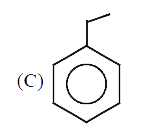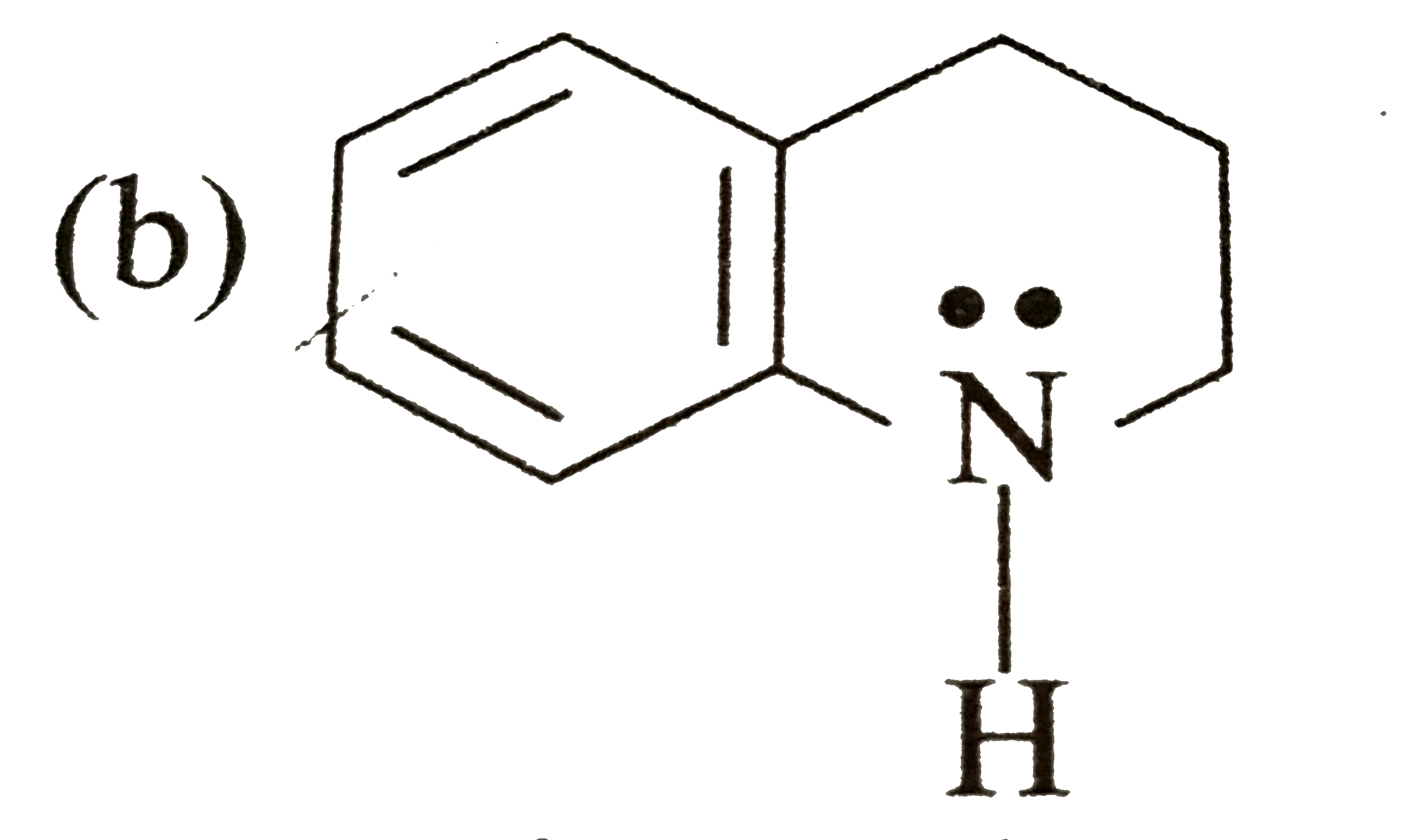Which of the following will undergo sulphonation at fastest rate ?




The correct Answer is:B
To determine which compound will undergo sulfonation at the fastest rate, we need to analyze the effects of substituents on the aromatic ring and their influence on electrophilic substitution reactions. Here’s a step-by-step breakdown of the solution:
Step 1: Understand the Reaction
Sulfonation of aromatic compounds is an electrophilic substitution reaction. In this reaction, an electrophile (in this case, the sulfonium ion, SO3H+) attacks the aromatic ring.
Hint: Remember that electrophilic substitution reactions are influenced by the electron density on the aromatic ring.
Step 2: Identify the Electrophile
The electrophile for sulfonation is generated from sulfuric acid (H2SO4). The reaction can be summarized as follows:
- H2SO4 → H+ + HSO4−
- HSO4− + SO3 → SO3H+ (Electrophile)
Hint: Identify how the electrophile is formed from sulfuric acid.
Step 3: Analyze the Substituents
The rate of sulfonation depends on the nature of the substituents attached to the aromatic ring. Electron-donating groups (EDGs) increase electron density, making the ring more reactive towards electrophiles, while electron-withdrawing groups (EWGs) decrease electron density.
Hint: Consider how each substituent affects the electron density on the aromatic ring.
Step 4: Evaluate the Options
Let’s evaluate the substituents on the options provided:
1. Isopropyl group (C3H7): This is an electron-donating group through hyperconjugation and inductive effects.
2. Methyl group (CH3): This is also an electron-donating group but has less hyperconjugation compared to isopropyl.
3. Ethyl group (C2H5): Similar to methyl but with slightly more hyperconjugation.
4. Tertiary butyl group (C4H9): This group has significant hyperconjugation and is a strong electron-donating group.
Hint: Compare the strength of electron donation from each substituent.
Step 5: Determine the Fastest Rate
Among the options, the isopropyl group (C3H7) will provide the most electron density due to its ability to stabilize the positive charge during the electrophilic attack through hyperconjugation. Therefore, it will undergo sulfonation at the fastest rate.
Hint: Look for the substituent that offers the most stabilization to the positive charge during the reaction.
Conclusion
The compound that will undergo sulfonation at the fastest rate is the one with the isopropyl group (Option 1).
Final Answer: Option 1 (Isopropyl group) will undergo sulfonation at the fastest rate.
Sulfonation of aromatic compounds is an electrophilic substitution reaction. In this reaction, an electrophile (in this case, the sulfonium ion, SO3H+) attacks the aromatic ring.
The electrophile for sulfonation is generated from sulfuric acid (H2SO4). The reaction can be summarized as follows:
- H2SO4 → H+ + HSO4−
- HSO4− + SO3 → SO3H+ (Electrophile)
The rate of sulfonation depends on the nature of the substituents attached to the aromatic ring. Electron-donating groups (EDGs) increase electron density, making the ring more reactive towards electrophiles, while electron-withdrawing groups (EWGs) decrease electron density.
Let’s evaluate the substituents on the options provided:
1. Isopropyl group (C3H7): This is an electron-donating group through hyperconjugation and inductive effects.
2. Methyl group (CH3): This is also an electron-donating group but has less hyperconjugation compared to isopropyl.
3. Ethyl group (C2H5): Similar to methyl but with slightly more hyperconjugation.
4. Tertiary butyl group (C4H9): This group has significant hyperconjugation and is a strong electron-donating group.
Among the options, the isopropyl group (C3H7) will provide the most electron density due to its ability to stabilize the positive charge during the electrophilic attack through hyperconjugation. Therefore, it will undergo sulfonation at the fastest rate.
The compound that will undergo sulfonation at the fastest rate is the one with the isopropyl group (Option 1).
Topper's Solved these Questions
- AROMATIC COMPOUNDBOOK - MOTIONCHAPTER - AROMATIC COMPOUNDEXERCISE - Exercise - 2 (Level-II)
29 Videos
- AROMATIC COMPOUNDBOOK - MOTIONCHAPTER - AROMATIC COMPOUNDEXERCISE - Exercise - 3
17 Videos
- AROMATIC COMPOUNDBOOK - MOTIONCHAPTER - AROMATIC COMPOUNDEXERCISE - Exercise - 4 | Level-II
16 Videos
- ALKYI HALIDEBOOK - MOTIONCHAPTER - ALKYI HALIDEEXERCISE - Exercise - 4 | Level-II
8 Videos
- ATOMIC STRUCTURE BOOK - MOTIONCHAPTER - ATOMIC STRUCTURE EXERCISE - EXERCISE-4 (LEVEL-II)
18 Videos
Similar Questions
Knowledge Check
Which of the following compounds undergoes nitration at fastest rate ?
A B
B C
C D
D
Which of the following is readily sulphonated ?
AButaneBIsobutaneCNeopentaneDMethaneYou are monitoring the diffusion of a coloured molecule across a membrane, Which of the following will result in the fastest rate of diffusion?
AAn internal concentration of 5% and an external concentration of 60%BAn internal concentration of 35% and an external conc. of 40%CAn internal concentration of 60% and an external concentration of 5%Da and c are correct
Which of the following compound will react with the fastest rate by E2 mechanism?
View SolutionWhich of the following alkyl halides undergoes the fastest base-induced dehydrohalogenation?
View SolutionWhich of the following can be seperated by sulphonation?
View SolutionWhich of the following is considered as the fastest printer?
View SolutionWhich of the following aromatic compound gives sulphonation reaction very easily ?
View Solution
